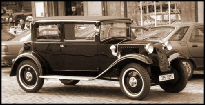























All the projects we do for the GCSE course require you to know something about the materials you are using. You should be able to suggest particular metals and particular plastics from a few that we will use during the course. Always be cautious of answering exam questions by saying that something should be made of ‘metal’ ‘wood’ or ‘plastic’. You should be able to be more specific than that and include mention of the ‘properties’ of any materials you suggest. It is also important that you can describe how the products you design would be manufactured – what processes might be used and what everything might cost.
METALS
RECYCLING
You should know about the basic classification of metals ( Non-Ferrous and Ferrous ). [Those with iron in them and those without iron.] You should check out different alloys and know what an alloy is and about the characteristics of some metals.
How important do you think ‘re-cycling is ? What products could be improved if they were made to be re-cycled. What products do you think you own that have been made from

recycled materials? Is the recycling of paper import? How much energy is used to make different products.
Why should we REDUCE, REUSE, RECYCLE ?
How does ‘waste’ affect us ?
Why should we REDUCE, REUSE, RECYCLE ?
How does ‘waste’ affect us ?
Although ‘Engineering / Industrial Production’ does not ask you to know lots about different types of wood, it will certainly be useful to know a little about the properties of some of them. Different types can be better for making ‘patterns’ ~ the moulds for making castings, as they can more easily be worked, have different grain structure and are resistant to knocks
PLASTICS
Plastics are made from hydrocarbons (Oil).
We have a limited supply of hydro-carbon reserves on our planet and that is why you find organisations and individuals saying we should use less of our fossil fuels. Is it better to burn something as a fuel - which is what happens a lot with oil and petrol - or use the oil reserves in the production of a valuable material that we can then use in making many
other different products ? Should we recognise
that alternative sources of hydrocarbons - such as bio-fuels might better be developed to use instead
of the oil produced from fossil fuels ?
We have a limited supply of hydro-
that alternative sources of hydrocarbons -
Currently an enormous amount of plastics are used in manufacturing because they are light and are easy to reshape. This has led to an increasing number of different types of plastics all with subtly different properties.
The LOTUS bike shown here was ridden by Chris Boardman in the last Olympic games.
It is made from CARBON FIBRE and after shaping, the material is held in place by a thermosetting resin. It could therefore be said to be a ‘composite material’ bike. The bike was designed for Boardman by Designer / Inventor Mike Burrows.
Thermoplastics and Thermosetting Plastics are the two groups we are concerned with. Thermoplastics have what is called ‘plastic memory’. Check what this means and how you could use it. Thermosetting plastics are used in moulds and make things such as electrical plugs and items that will be exposed to high temperatures.
The LOTUS bike shown here was ridden by Chris Boardman in the last Olympic games.
It is made from CARBON FIBRE and after shaping, the material is held in place by a thermosetting resin. It could therefore be said to be a ‘composite material’ bike. The bike was designed for Boardman by Designer / Inventor Mike Burrows.
Thermoplastics and Thermosetting Plastics are the two groups we are concerned with. Thermoplastics have what is called ‘plastic memory’. Check what this means and how you could use it. Thermosetting plastics are used in moulds and make things such as electrical plugs and items that will be exposed to high temperatures.
during handling. It is also important to realise how sustainable production is a massively vital moral issue.
Manufacturing techniques
Injection moulding has allowed greater freedom in shaping the design of many modern products. Phones are a good example where the smooth flowing shape of many designs have been possible through the use of this process. Older style phones like the ones shown here, were often made up from many separate parts and took a long while to assemble.

Quicker manufacturing times ultimately means cheaper goods - good for the consumers, more competitive products and hopefully higher profits - and that’s good for the manufacturers. Standardised components and PCBs (Printed Circuit Boards) have all contributed to the trend towards a ‘throw-away’ society in which it is

often cheaper to go out and buy another replacement for something that goes wrong instead of finding someone to repair the original item. It may be worth considering what the long-term cost of a throw-away society really is ! What do you think ?
Cars used to be built on heavy chassis to give strength to the body. The shapes of the old style cars’ body panels were much flatter than they are now before pressing techniques were developed. Many items including cars get strength from the folded metal/plastic shape of their bodies. This is the principle of ‘monocoques’ structures and led to sleeker shapes and ultimately to cheaper cars .

Look around you - What products or equipment have not had a considerable amount of time and
effort spent on them? Plastic resealable bags in which you keep your sandwiches have been carefully designed by polymer engineers. Equipment used to play CDs or DVDs have been designed by electronic and mechanical engineers. Trainers and clothing sports have been designed by scientists and engineers. There is no end to the input engineers have to our lives. The days when 'engineer' applied to those working in heavy industry have rapidly disappeared - to be replaced by today's approach when a massive amount of scientific application creates products, processes & equipment. The design and making done by an enormous range of engineers in different fields - often with very specific areas of expertise.

Why donate ?






